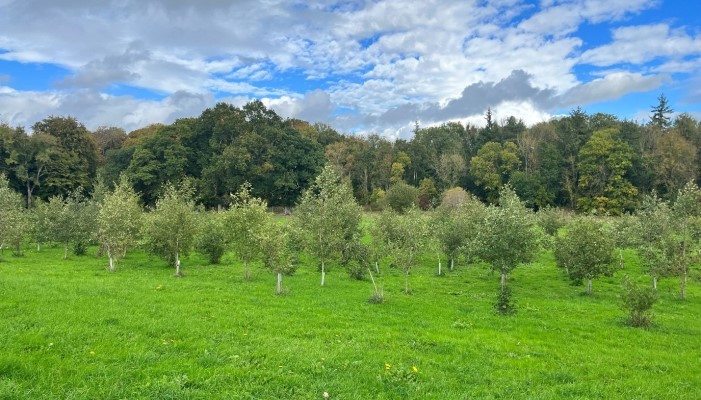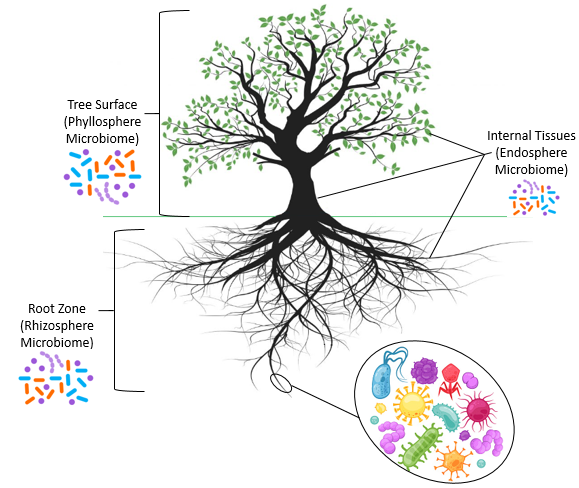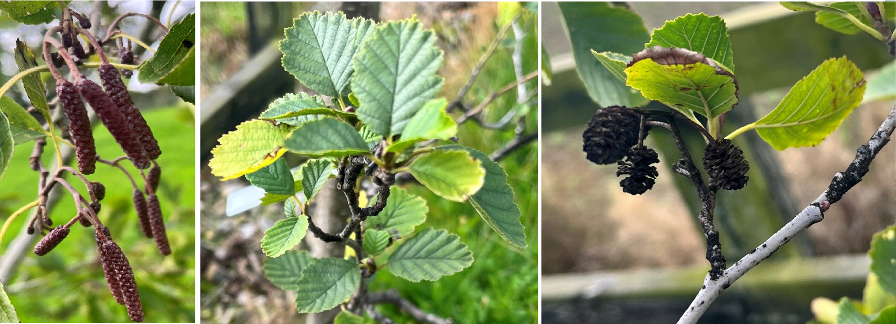02 December 2022
Why should we study microbiomes in forestry?

Trees act as the lungs of the earth, playing a significant role by contributing to our environment. Terrestrial plants including forest trees are generally known to live in close association with microbial organisms. Researcher Dheeraj Rathore & PhD student Emma Fuller study microbiomes in forestry
Trees – the lungs of the earth contribute to our environment by:
- providing food and oxygen
- reducing carbon emissions
- supporting multiple ecosystems as primary producers.
Terrestrial plants including forest trees are generally known to live in close association with microbial organisms. The inherent features of this close association can be commensalism, parasitism or mutualism. The term “microbiota” has been used to describe this ecological community of plant-associated pathogenic, mutualistic, endophytic and commensal microorganisms.
Did you know?
Commensalism is a long-term biological interaction in which members of one species gain benefits while those of the other species neither benefit nor are harmed. e.g.: Tree frogs use plants as protection.
Parasitism is an association between two different organisms wherein one benefits at the expense of the other. e.g.: European Mistletoe and its preferred hosts; apple, hawthorn and poplar trees.
Mutualism is an association between organisms of two different species in which each benefits. e.g.: Flowering plants and pollinators.
Forest microbial communities are highly variable and comprised of organisms like archaea, bacteria, fungi, protists, and viruses. The composition of these microbial communities is known as the microbiome. These microbial communities inhabit various forest habitats including foliage, wood of living trees, bark surface, ground vegetation, roots and the rhizosphere, litter, soil, deadwood, rock surfaces, invertebrates, wetlands and the surrounding atmosphere.
Did you know? Microbial fingerprinting is not just used for humans, but is used for plants, such as trees and crops. Each tree species has its own microbial identity.
Trees and microorganisms
Trees host a range of diverse and complex microorganisms and these microbes tend to evolve with their host tree species. Microbiomes are important since the microorganisms present have the ability to provide information regarding plant performance, tree health and development. They provideand resistance to pathogenic species because certain beneficial microbes improve plant growth and resistance to stresses.
In comparison to annual crops, the long-lived nature of trees provide a continuous food source for beneficial microbiota as well as parasites and pathogens. In addition, the microbiota present can vary because of environmental conditions, but tend to be more stable and consistent due to less disturbance of forest soils. The microbial community present also varies due to biotic and other abiotic stressors.
Endosphere, Phyllosphere and Rhizosphere
- Endosphere: Represents microbial endophytes that colonise intracellular regions within plant tissues. The diversity of microbial communities interacting with the endosphere contributes to plant functions and immunity.
- Phyllosphere: The total above-ground surface of a plant when viewed as a habitat for microorganisms. Phyllosphere microbiota play a critical role in protecting plants from diseases as well as promoting their growth by various mechanisms.
- Rhizosphere: The soil zone directly surrounding the plant roots inhabited by a unique population of microorganisms where the biological and chemical features of the soil are influenced by the roots. The rhizosphere performs various functions and exert numerous effects on plant growth. They are involved in nutrient cycling, protection from pathogens and other (a)biotic stress conditions. These microbial activities in the rhizosphere lead to changes in the composition, quality, and quantity of root exudates released by the plants, which in turn affect the microbial component.

Figure 1: Tree microbiome and associated microbiome zones
There are several regions involved in plant-microbe interactions, they either live outside (rhizosphere), inside (endosphere) or on (phyllosphere) the plant. The plant microbiome can survive either inside or outside of plant tissues, performing various plant beneficial activities including biocontrol of potential pathogens and promotion of plant growth. In addition, the microbial communities present within these zones are influenced by the host species and the environment they are in.
Did you know? Plant and forest trees host distinct bacterial communities in the rhizosphere, phyllosphere, endosphere and surrounding soils, and these bacteria play a crucial role in growth and health.
Role of microbiomes in forestry
The members of plant microbiome comprise of beneficial, neutral or pathogenic microorganisms. Microbiota are important for plant growth, nutrient uptake, health, pathogenic resistance and stress resilience. Microbiomes have multiple roles in forestry that can be pathogenic, symbiotic, and plant growth promoting. In addition, forest soil microbiomes have crucial roles in carbon storage, biogeochemical cycling and rhizosphere processes.
Did you know? Natural biocontrol agents can be found within forest microbiomes which can be used to reduce pathogenic invasion and disease.
Studying forest microbiomes provide information regarding natural plant growth promotion, bio-agents, bio-fertilisers and bio-stimulants. In addition, understanding the molecular mechanisms of plant–microbe interaction can help develop innovative genetic engineering strategies of symbiosis, mutualism, and disease resistance through bioinformatics. The inoculation with key microbiota members can improve plant traits and plant breeding for improved interaction with microbiota and can help produce resistant trees to pathogenic and environmental stresses. Biochemical and molecular methods have advanced to date which allows in depth analysis of forest microbiomes for improvement strategies of endangered native tree species.
Current research
Common alder (Alnus glutinosa) is at risk of infection due to the root rot pathogen Phytophthora alni. Alder is a common native woodland tree found along rivers providing stability to the banks and prevents soil erosion. It also provides a valuable habitat and food sources to a diverse wildlife. This species is a well-known coloniser due to its resilience and adaptation within extreme conditions. Beneficial microbiota can promote plant health directly as bio-stimulants and/or indirectly as biocontrol-based tools against pest/pathogens.
Alder improvement programme
Teagasc established an alder improvement programme in 2005, and this has been progressing since. The aim of this programme is to provide genetically improved alder tree germplasm for deployment in farm forestry. A gene bank was established at Teagasc, Oak Park, Carlow, consisting of the full collection of alder ‘plus’ tree clones. In addition, a qualified indoor clonal seed orchard is also situated in Teagasc, Ashtown which is used for progeny trials to assess the value of the trees as parents. Please visit Alder Improvement Programme for further details.
The ExAl; Exploiting Alder microbiome project started in September 2022 and focuses on investigating the plant and rhizosphere microbiome of Alder trees to isolate potential bio-agents for improved disease tolerance against Alder dieback caused by P. alni. The research for this project is funded by the Irish Research Council, Government of Ireland Postgraduate Scholarship Programme. This is a collaborative project with Dr Kieran Germaine in SETU Carlow and Dr Dheeraj Rathore in Teagasc. The proposed research will provide comprehensive microbiome analysis of tolerant and susceptible alder trees by:
- Investigating the microbiome of susceptible versus tolerant alder genotypes.
- Isolating culturable microbes to test for antagonistic activity against P. alni.
- Exploiting potential bio-agents to enhance disease tolerance in susceptible alder genotypes.

Figure 2: Structures of Alder flowering clusters (catkins), leaves and woody fruiting bodies, respectively
The Teagasc Forestry Department issues an article on a Forestry topic every Friday here on Teagasc Daily Subscribe to: Forestry e-News Keep up-to-date with the Teagasc Forestry Department or follow them on Social Media
